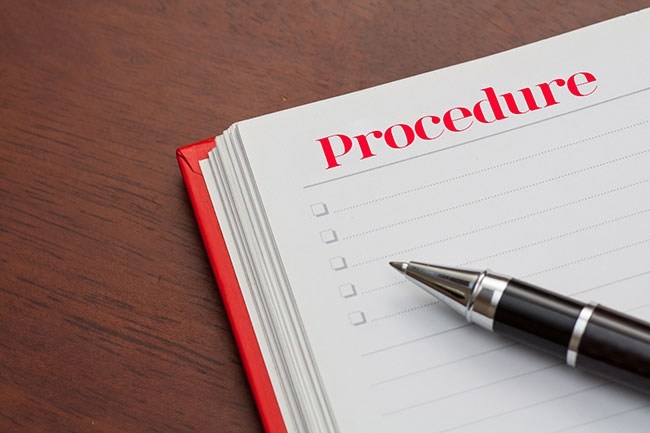
Features
Freshwater
How-to
Management
ABCs of SOP
Keys to effective RAS operations protocol
April 20, 2019 By The Experts at the Freshwater Institute

Given the unique nature of each RAS facility, maintaining a catalog of Standard Operating Procedures (SOPs) specific to your site is helpful. SOPs describe how essential routine tasks at the facility should be performed to meet quality standards. Up-to-date SOPs are a useful tool for training new hires and are a guide for continuity and quality assurance between staffing changes and work shifts.
When deciding to implement SOPs at a facility, include fish production staff in the process to solicit input and increase cooperation. Prioritize essential tasks, such as maintaining biosecurity, disinfecting equipment, or waste water discharge permitting, as the first SOPs to be written. The overall format of SOPs is flexible but should consist of the following sections.
Identification and titles
A SOP catalog should have a master table of contents with individual SOPs identified accordingly. A descriptive title allows the user to quickly identify the SOP they may need. An efficient identification system allows easy access to the documents in the SOP catalog. To improve work flow, maintain a set of SOPs in an office area as well as in the working areas for quick reference.
Scope, Purpose, Summary
The SOP should begin with a scope or purpose statement that describes the need for the procedure and the intent of the document. A short, few sentence, summary of the method helps a user confirm that they are referencing the correct SOP. This section should be brief, as the procedure will be described in depth later in the document.
Definitions
A short list of definitions for industry or facility specific jargon ensures that users fully understand the methodology of the SOP without having to reference other materials or use context clues to follow along. It is helpful to write this section after completing the SOP as only terms that appear in the document need to be defined.
Health and safety warnings
Any potential risks to human or animal health should be stated to alert staff. These risks may include possible falls, injury risk from machinery, exposure to chemicals or gasses, and many others.
Personnel qualifications
This section identifies the intended audience, and accordingly, the SOP should be written so that staff with the minimum suggested training would be expected to understand and successfully complete the procedure.
Equipment
A list of necessary equipment allows all items to be gathered or procured prior to beginning. This prevents interruptions and may save time and resources from having to repeat a procedure.
Procedure
When developing a SOP, the author should perform the task, taking note of important details to be included in the method. Further, receiving input from other staff members may yield more efficient techniques that still meet quality standards. When describing the procedure in an SOP, it should be presented in a numbered or bulleted list of step by step instructions. This makes the document easy to quickly read and interpret. Use bold or underlined fonts to highlight critical steps or warnings. Be specific enough that the directions can be followed by someone unfamiliar with the procedure but avoid lengthy explanations with overly complicated details. Including images can quickly illustrate proper technique or point out locations of important equipment using overlaid arrows. Use only high-resolution, expanded images that clearly illustrate techniques, locations, or equipment. Relevant flow charts or tables are other useful tools. Include a suggested time allocation to guide the required effort to complete the procedure.
Data and records management
A record of procedure completion should be maintained, and the Data and Records Management section describes how this should be done. This often takes the form of check lists that ensure tasks are completed in regularly scheduled intervals and can prevent duplicated effort from staff. Effective record keeping can also provide feedback if a task should be performed more often or if equipment is failing.
References
Include any references to documents used to formulate the SOP. These may include any online and print sources or equipment operation manuals. Any SOPs referred to in the Procedure section should also be listed in the References section using the aforementioned identification system.
After authoring any SOP, allow staff to review or try to use the document to perform the task and incorporate any helpful feedback. A final draft of the SOP should be given final approval from essential staff. When a procedure is amended, or associated equipment is replaced or modified, the SOP should be updated to reflect the new procedure or retired and archived. At minimum, SOPs should be reviewed annually to ensure they are up to date and representative of the work done on site. Well written SOPs are a helpful tool when properly implemented and ensure quality standards at the facility.
To see an example SOP, visit the Publications page at FreshwaterInstitute.org.
Print this page